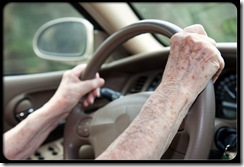 I remember when my father in law, Danny, bought his last car.
I remember when my father in law, Danny, bought his last car.
Recently retired, he splurged on a new Lincoln Town Car that was far fancier than any car he’d owned in the past.
He drove it around town with such pride. He and his wife, Mary, took that car to countless Irish events, to the racetrack and to visit their kids and grandkids.
In the third year of owning the car, Danny had his first accident, a year later his second and six months later his third. His neighbors called the police after the third, and he was summoned to court. Not long after receiving the summons, Danny was diagnosed with early stage Alzheimer’s.
By agreeing to give up driving, my father-in-law was able to avoid paying the fine.
The car sat in the driveway for months. My mother-in-law didn’t drive, either.
While Mary made do with the senior citizens bus for grocery shopping, Danny and Mary’s social life became smaller and smaller. No more Irish dancing, card playing or racetrack visits unless a son or a friend was available to take them.
One day Danny decided to give the car to his grandson. The Blue Book value at the time was $8,000. His sons were a bit surprised—why not sell the car? Their parents, on a limited income, could have used the money.
Danny is like the majority of seniors who, when faced with the prospect of no longer being able to drive, give their car away.
According to the Independent Transportation Network (ITN), men on average outlive their decision to stop driving by 6½ years. Women outlive their decision by 10 years.
By the time the last of the baby boomers turn 65, 20 percent of us will need alternate transportation. How many of us have considered our transportation plans for the last 10 years of our lives?
The fact is, we don’t think about it, we don’t plan for it, but it still arrives.
And because it arrives, most communities address senior transportation needs through their public transportation system.
According to Katherine Freund of ITN, that’s not always the best solution.
“Most seniors who can no longer drive don’t want to ride the bus,” Freund said. “At best the bus is inconvenient and at worst unavailable, as half the communities in the U.S. don’t have a public transportation system. Especially for boomers, cars are an extension of our yard and home. We name our cars, we polish them, and we don’t do that to buses.”
As the founder of ITN, Freund has developed an organization that uses cars to address transportation needs for seniors.
Once a senior establishes a Personal Transportation Account and pays a membership fee, he or she can arrange to be driven in a private car to a destination of choice. Trips to a physician’s office are the most commonly requested. The next most common is to the hairdresser.
Volunteer drivers earn credits to be used when they can no longer drive or to be banked for a loved one. Paid drivers fill in when volunteers are unavailable.
Seniors may pay for their transportation by donating their car to the program, shopping at participating retailers or through fees.
This is a great solution for a growing problem. If my father in law had donated his Lincoln Town Car to a program like this, it would have paid for a lot of trips to Irish dances.
But most of all, it would have allowed Danny to maintain his independence and dignity, even with his Alzheimer’s diagnosis.
More ...
Tags: senior transportation,ITN